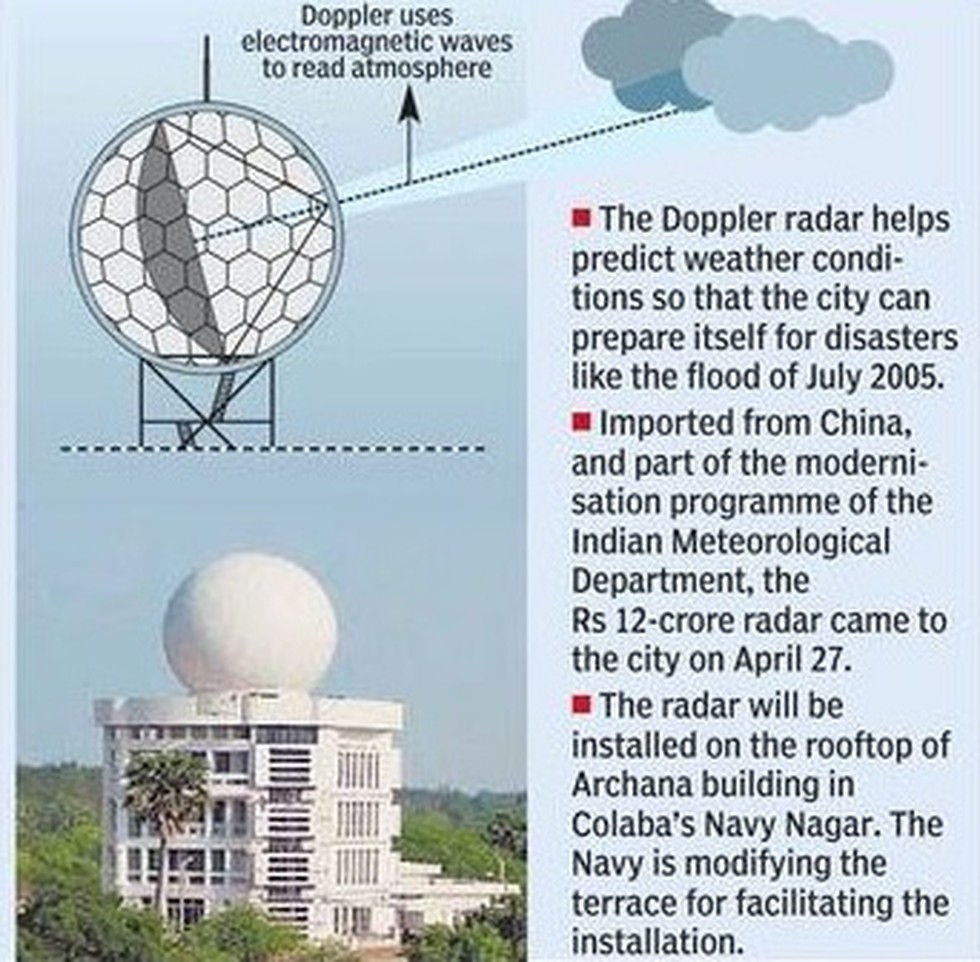How does a Doppler radar work?
- In radars, a beam of energy– called radio waves– is emitted from an antenna. When this beam strikes an object in the atmosphere, the energy scatters in all directions, with some reflecting directly back to the radar.
- The larger the object deflecting the beam, the greater is the amount of energy that the radar receives in return.
- Observing the time required for the beam to be transmitted and returned to the radar allows weather forecasting departments to “see” raindrops in the atmosphere, and measure their distance from the radar.
- What makes a Doppler radar special is that it can provide information on both the position of targets as well as their movement. It does this by tracking the ‘phase’ of transmitted radio wave pulses; phase meaning the shape, position, and form of those pulses.
